Grey Plover, Zilverplevier, Kiebitzregenpfeifer, Tarambola-cinzenta, Chorlito Gris
Spotted in the Alentejo region of Portugal. Grey Plover sound
The Grey Plover (Pluvialis squatarola), known as the Black-bellied Plover in North America, is a medium-sized plover breeding in arctic regions. It is a long-distance migrant, with a nearly worldwide coastal distribution when not breeding.

More photos at the bottom of this page:
They are 27–30 cm long with a wingspan of 71–83 cm, and a weight of 190–280 g (up to 345 g in preparation for migration). In spring and summer (late April or May to August), the adults are spotted black and white on the back and wings. The face and neck are black with a white border; they have a black breast and a white rump. The tail is white with black barring. The bill and legs are black. They moult to winter plumage in mid August to early September and retain this until April; this being a fairly plain grey above, with a grey-speckled breast and white belly.
The juvenile and first-winter plumages, held by young birds from fledging until about one year old, are similar to the adult winter plumage but with the back feathers blacker with creamy white edging. In all plumages, the inner flanks and axillary feathers at the base of the underwing are black, a feature which readily distinguishes it from the other three Pluvialis species in flight. On the ground, it can also be told from the other Pluvialis species by its larger (24–34 mm), heavier bill. In spring and summer, mating season comes and the adults’ bellies of this species turn black whether the bird is still in its wintering place (for example, on a beach in Sanibel Island, Florida) because it does not want to migrate, or in its breeding grounds up in the arctic of northern Canada and Alaska.
Their breeding habitat is Arctic islands and coastal areas across the northern coasts of Alaska, Canada, and Russia. They nest on the ground in a dry open tundra with good visibility; the nest is a shallow gravel scrape. Four eggs (sometimes only three) are laid in early June, with an incubation period of 26–27 days; the chicks fledge when 35–45 days old.
They migrate to winter in coastal areas throughout the world. In the New World they winter from southwest British Columbia and Massachusetts south to Argentina and Chile, in the western Old World from Britain and southwestern Norway south throughout coastal Africa to South Africa, and in the eastern Old World, from southern Japan south throughout coastal southern Asia and Australia, with a few reaching New Zealand. It makes regular non-stop transcontinental flights over Asia, Europe, and North America, but is mostly a rare vagrant on the ground in the interior of continents, only landing occasionally if forced down by severe weather, or to feed on the coast-like shores of very large lakes such as the Great Lakes, where it is a common passage migrant.
Young birds do not breed until two years old; they typically remain on the wintering grounds until their second summer.
They forage for food on beaches and tidal flats, usually by sight. The food consists of small molluscs, polychaete worms, crustaceans, and insects. It is less gregarious than the other Pluvialis species, not forming dense feeding flocks, instead feeding widely dispersed over beaches, with birds well spaced apart. They will however form dense flocks on high tide roosts.
The Grey Plover is one of the species to which the Agreement on the Conservation of African-Eurasian Migratory Waterbirds (AEWA) applies.
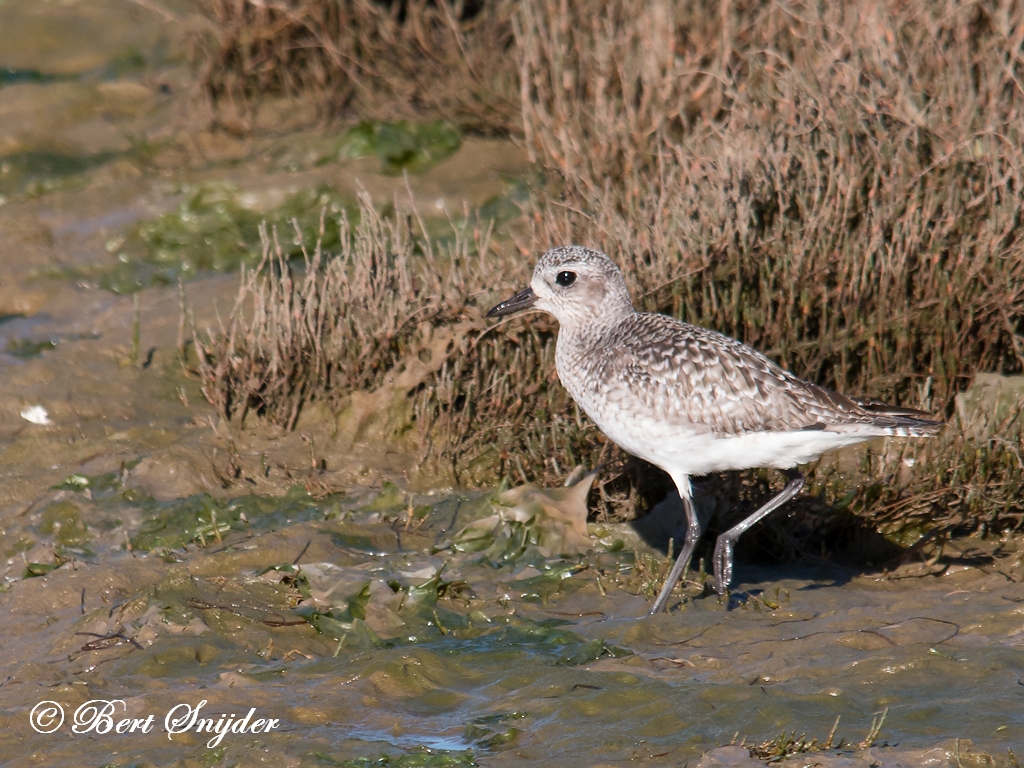
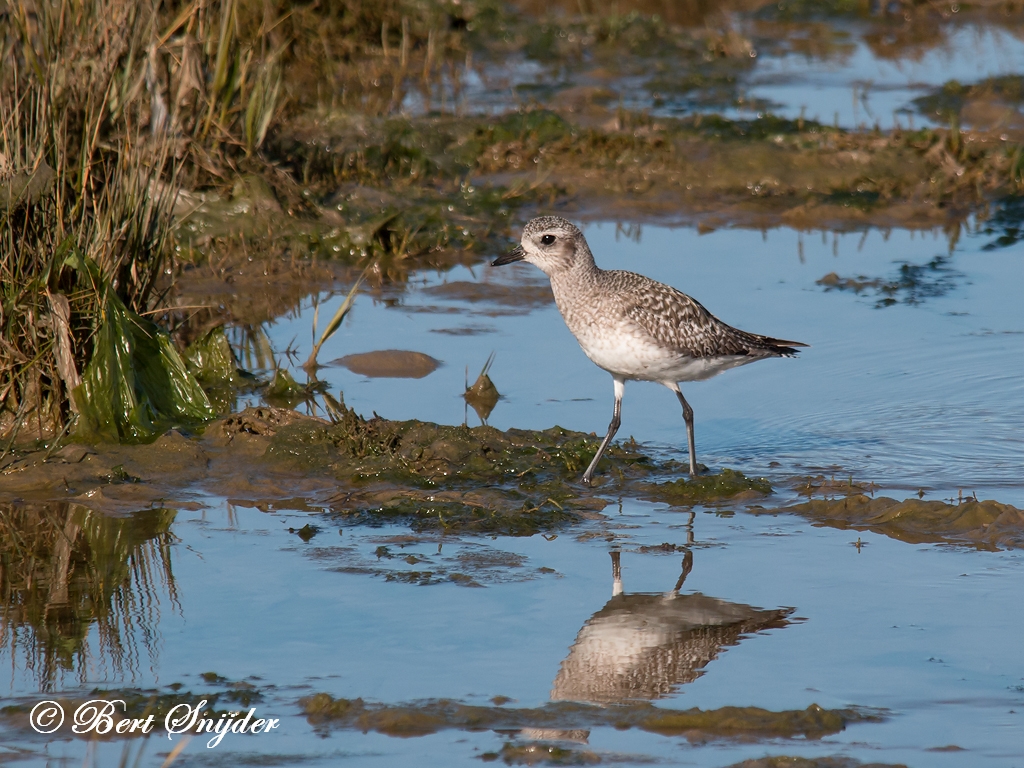
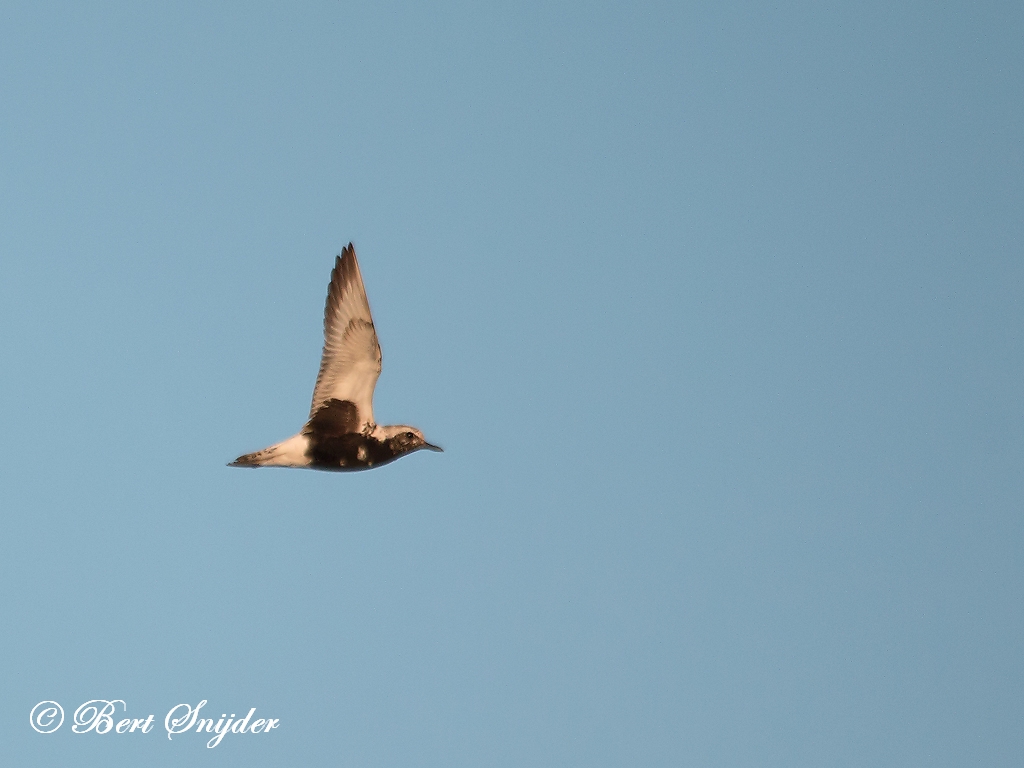
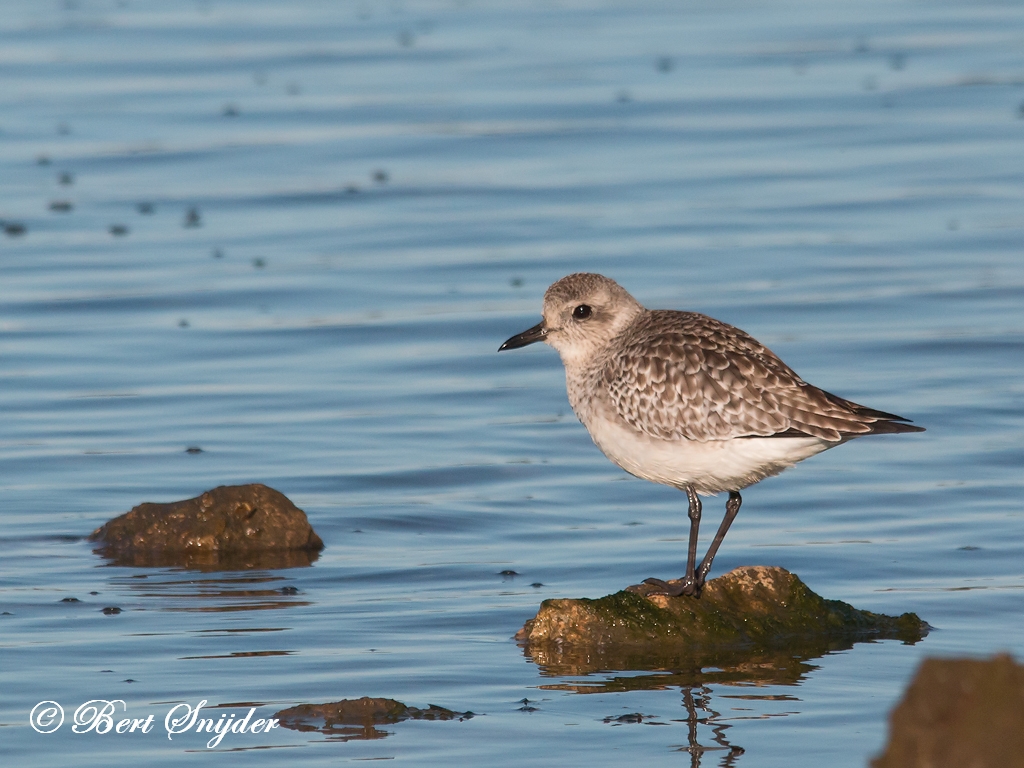
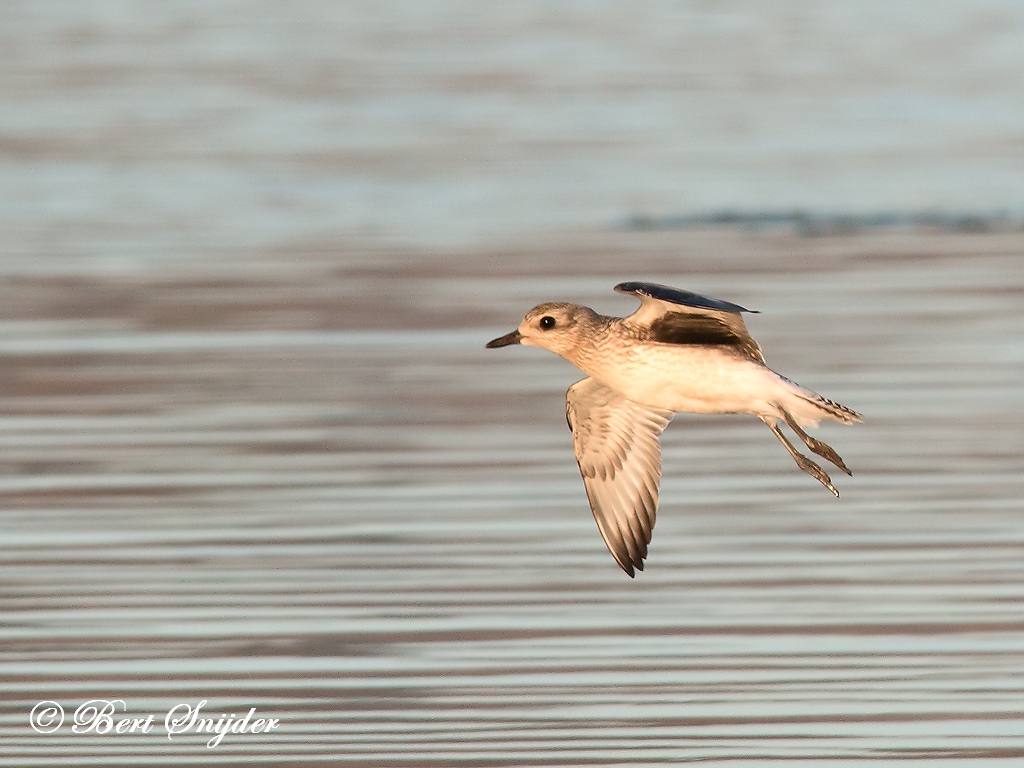
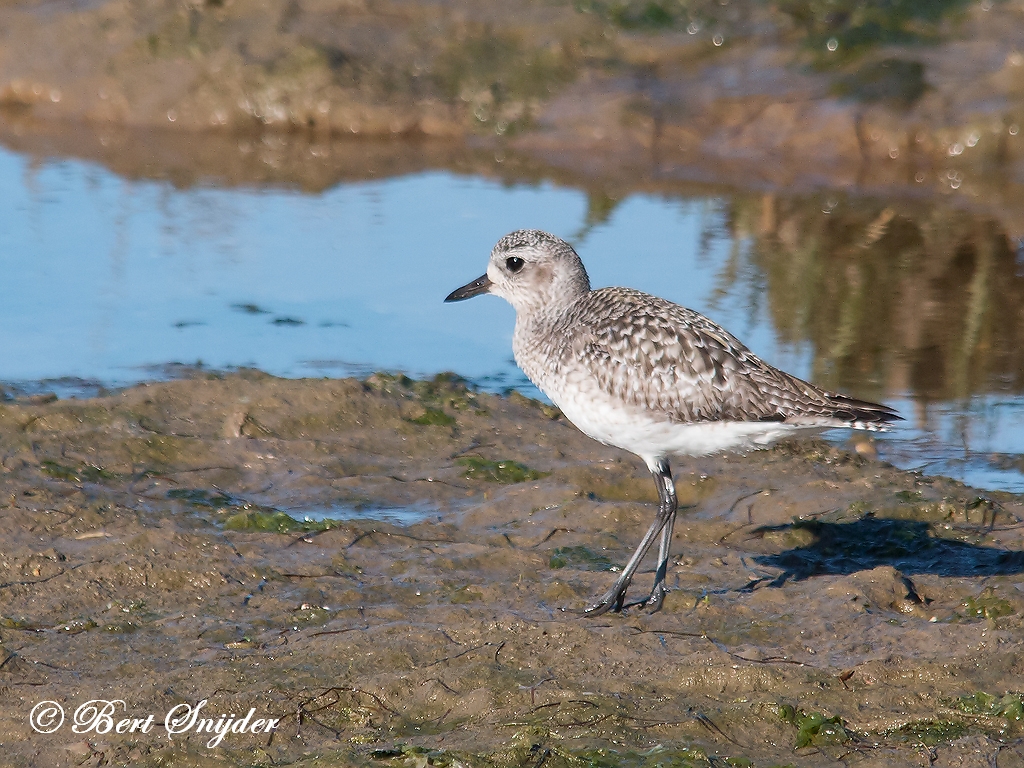
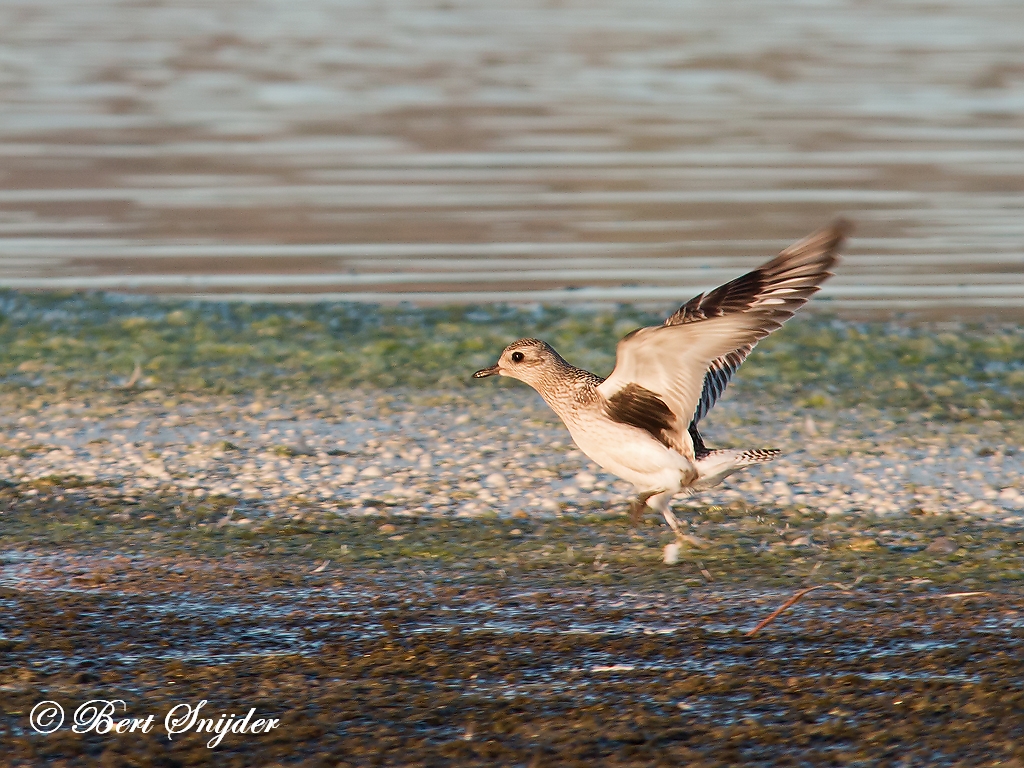
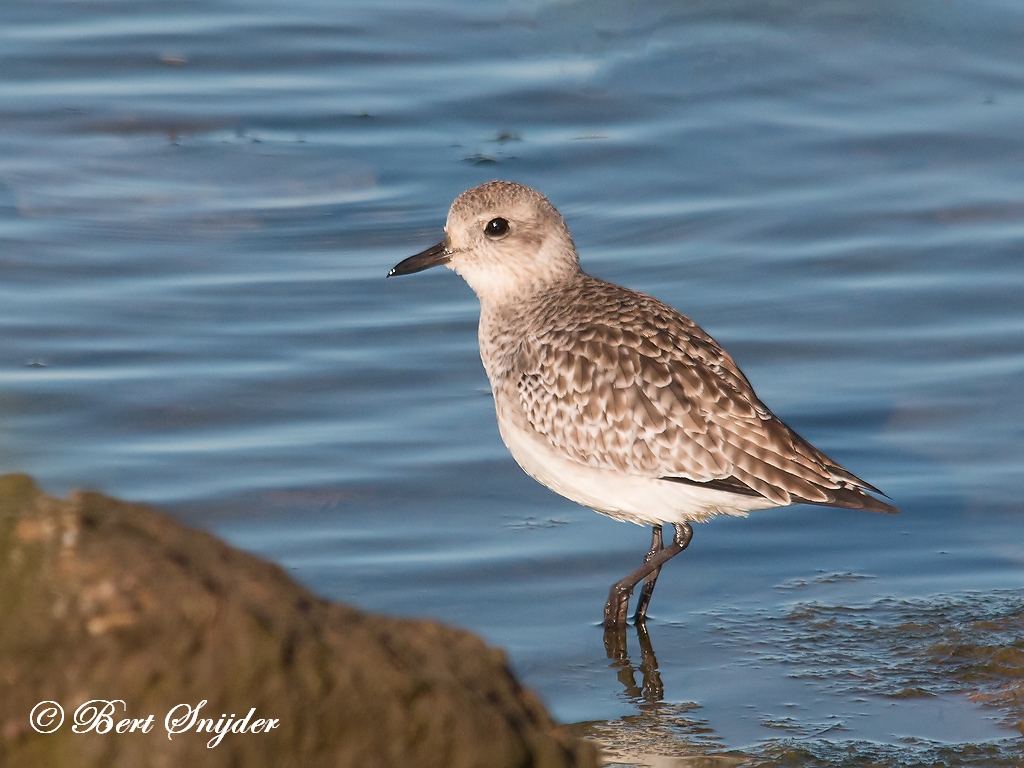
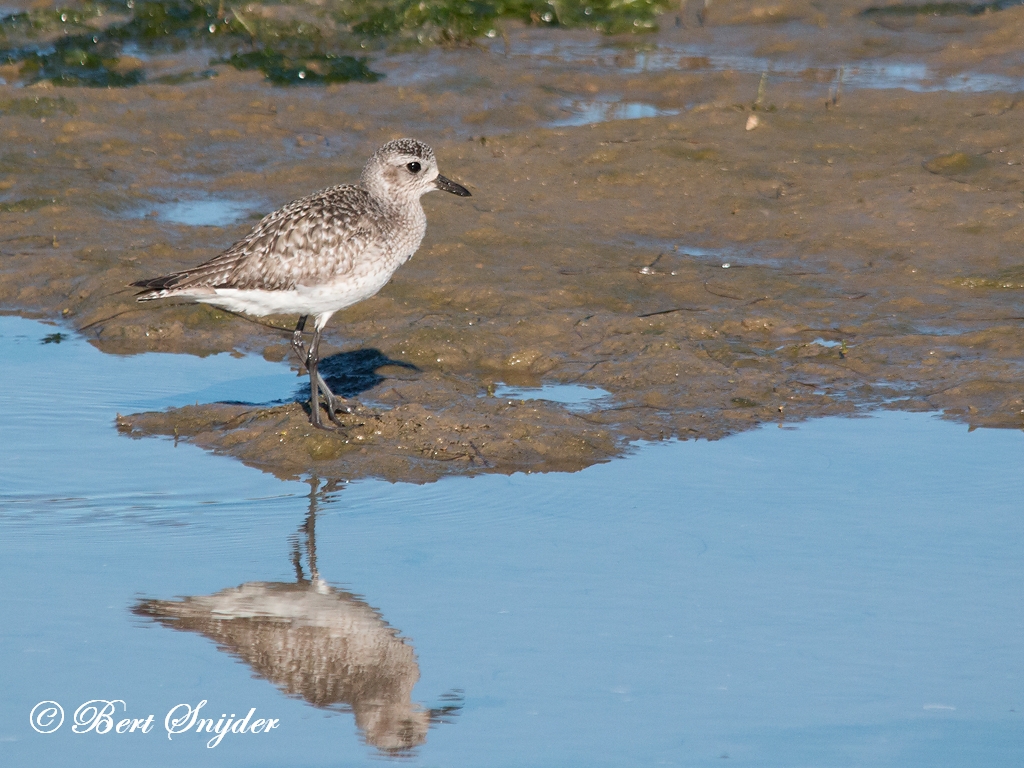
Other synonyms:
Afrikaans: Grysstrandkiewiet
Asturian: Pollu Cardexu, Pollu del Pedreu
Azerbaijani: Tules
Breton: Ar morlivid-aod
Catalan: Fuell gris, Picre gris, Pigre gris, Torlit
Catalan (Balears): Fuell gris
Valencian: Torlit
Czech: Kulík bledý
Welsh: Cornicyll llwyd , Cwtiad glas, Cwtiad llwyd
Danish: Strandhjejle
German: Kiebitzregenpfeifer, Kiebiz-Regenpfeifer, Maoriregenpfeifer
Emiliano-romagnolo: Ucilòn
English: Black Bellied Plover, Black-bellied Plover, Bullhead, Gray Plover, Gray Plover/Black-bellied Plover, Grey Plover, Grey Plover/Black-bellied Plover, Silver Plover
Spanish: Chorlito de Vientre Negro, Chorlito Gris, Chorlo Artico, Chorlo ártico, chorlo axila-negra, Chorlo Gris, Playero, Playero Cabezón, Playero Gris, Playero panza negra, Pluvial Cabezón
Spanish (Argentine): Chorlo Artico, Chorlo ártico
Spanish (Chile): Chorlo ártico
Spanish (Colombia): Chorlito Gris
Spanish (Costa Rica): Chorlito Gris
Spanish (Cuba): Pluvial Cabezón
Spanish (Dominican Rep.): Chorlo Gris, Playero, Playero Gris
Spanish (Honduras): Playero panza negra
Spanish (Mexico): Chorlo Gris
Spanish (Nicaragua): Chorlito Gris
Spanish (Paraguay): Chorlo ártico
Spanish (Uruguay): Chorlo Ártico, Chorlo Gris
Spanish (Venezuela): Playero Cabezón
Estonian: Plüü
Basque: Pigre gris, Txirri gris, Txirri grisa
Finnish: Tundrakurmitsa
Faroese: Fjørulógv
French: Pluvier à ventre noir, Pluvier argenté, Pluvier gris
Frisian: Slykwilster
Irish: Feadóg Ghlas
Guadeloupean Creole French: Pluvier gris, Pluvier grosse tête
Gaelic: Trìlleachan
Galician: Pigre gris, Píldora cincenta
Guarani: Mbatuirusu
Manx: Feddag ghlass
Haitian Creole French: Plivye vant nwa
Croatian: Zlatar Pijukavac
Hungarian: Ezüstlile, Ujjaslile
Indonesian: Cerek besar, Trulek kli-u-i
Icelandic: Grálóa
Italian: Pivieressa
Inuktitut: Anngilik, Tudliakdjuk
Japanese: daisen, daizen
Cornish: Cornwhylen los
Latin: Charadrius squatarola, Pluvialis squatarola, Pluvialis squatarola squaratola, Squatarola squatarola
Lithuanian: Jurinis sejikas
Malay: Rapang Kelabu
Maltese: Pluviera Pastarda
Dutch: Zilverplevier
Norwegian: Strandlo, Tundralo
Polish: siewnica
Portuguese: Batuira-cinzenta, batuíra-cinzenta, batuiruçu-de-axila-preta, tarambola cinzenta, Tarambola-cinzenta
Portuguese (Brazil): batuíra-cinzenta, Batuiruçu-de-axila-preta
Romansh: Gravarel d’argient
Scots: Trilleachan
Slovak: Kulík bledý
Slovenian: crna prosenka
Albanian: Gjelëza pikaloshe
Serbian: sivi zujavac, Zlatar pijukavac
Swedish: Kustpipare
Swahili: Kitwitwi Kijivu
Vietnamese: Choi choi xám
Travel Birdwatching Holiday Alentejo, Vacation Portugal for birders to see birds on your trip.